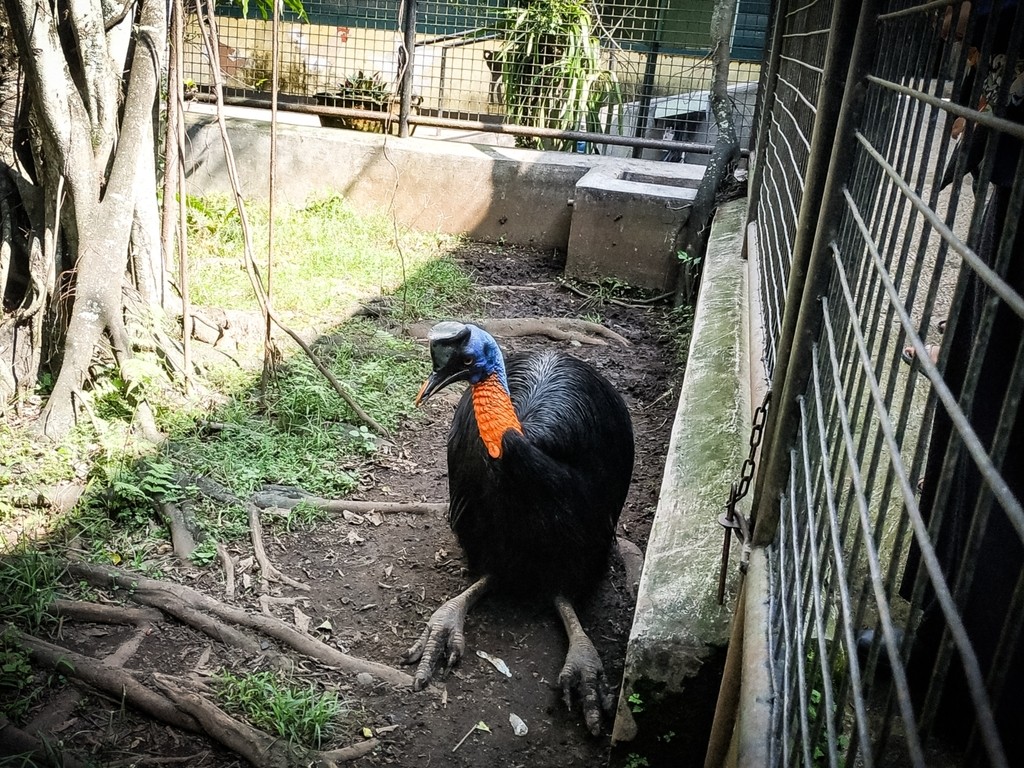Northern Cassowary
A species of Cassowary, Also known as Golden-necked Cassowary Scientific name : Casuarius unappendiculatus Genus : Cassowary
Northern Cassowary, A species of Cassowary
Also known as:
Golden-necked Cassowary
Botanical name: Casuarius unappendiculatus
Genus: Cassowary
Content
Description General Info
 Photo By nidaaudiarahmawati , used under CC-BY-NC-4.0 /Cropped and compressed from original
Photo By nidaaudiarahmawati , used under CC-BY-NC-4.0 /Cropped and compressed from original Description
It has hard and stiff black plumage, blue facial skin and a casque on top of the head. It has a bright red or yellow coloured neck and wattle. The feet are huge and strong with long, dagger-like claw on its inner toe. The sexes are similar. The male, at 30 to 37 kg (66 to 82 lb), is smaller than the female, at an average of 58 kg (128 lb), making it the fourth heaviest living bird species after the common ostrich, Somali ostrich and the southern cassowary. These birds measure 149 cm (4.89 ft) long and stand 1.5–1.8 m (4.9–5.9 ft) in height. Compared to the southern cassowary, the northern cassowary has a slightly shorter bill, at 12 to 13.7 cm (4.7 to 5.4 in), but a slightly longer tarsal length, at 28 to 33.2 cm (11.0 to 13.1 in). 
Size
1.5 m
Habitat
The northern cassowary is distributed and endemic to coastal swamp and lowland rainforests of northern New Guinea and the islands of Yapen, Batanta and Salawati. They prefer elevations below 490 m (1,610 ft). 
General Info
Behavior
As with other cassowaries, it is a shy and solitary bird. Their diet consists mainly of berries, fruits and small animals, such as mice, rats, frogs, snakes, lizards, smaller birds and a variety of small insects and snails. They will eat dead animals when they find them. The young have been observed to eat the feces of the males raising them and clutch mates. Adults will eat their own feces as it often contains undigested fruits. They make grunting and hissing sounds, like other cassowaries. In the breeding season, the polygamous female lays three to five green eggs on a well camouflaged nest prepared by the male; she then leaves the nest and eggs to find another mate. The male incubates the eggs and raises the chicks alone for about nine months. 
Species Status
Although subject to ongoing habitat loss and overhunting in some areas, as of 2017 the Northern Cassowary is evaluated as Least concern on the IUCN Red List of Threatened Species, as population size estimates suggest that populations are actually larger than previously estimated. Hunting is still considered the biggest threat. Native people use the bones and eggs, and take the chicks to be raised for meat. As logging opens up more areas of the forest, hunting will be more of a problem. Their occurrence range is 186,000 km (72,000 sq mi) and a 2000 estimate placed their numbers at 9300. 
Scientific Classification
Phylum
Chordates Class
Birds Order
Emu and Cassowaries Family
Cassowaries and emu Genus
Cassowary Species
Northern Cassowary